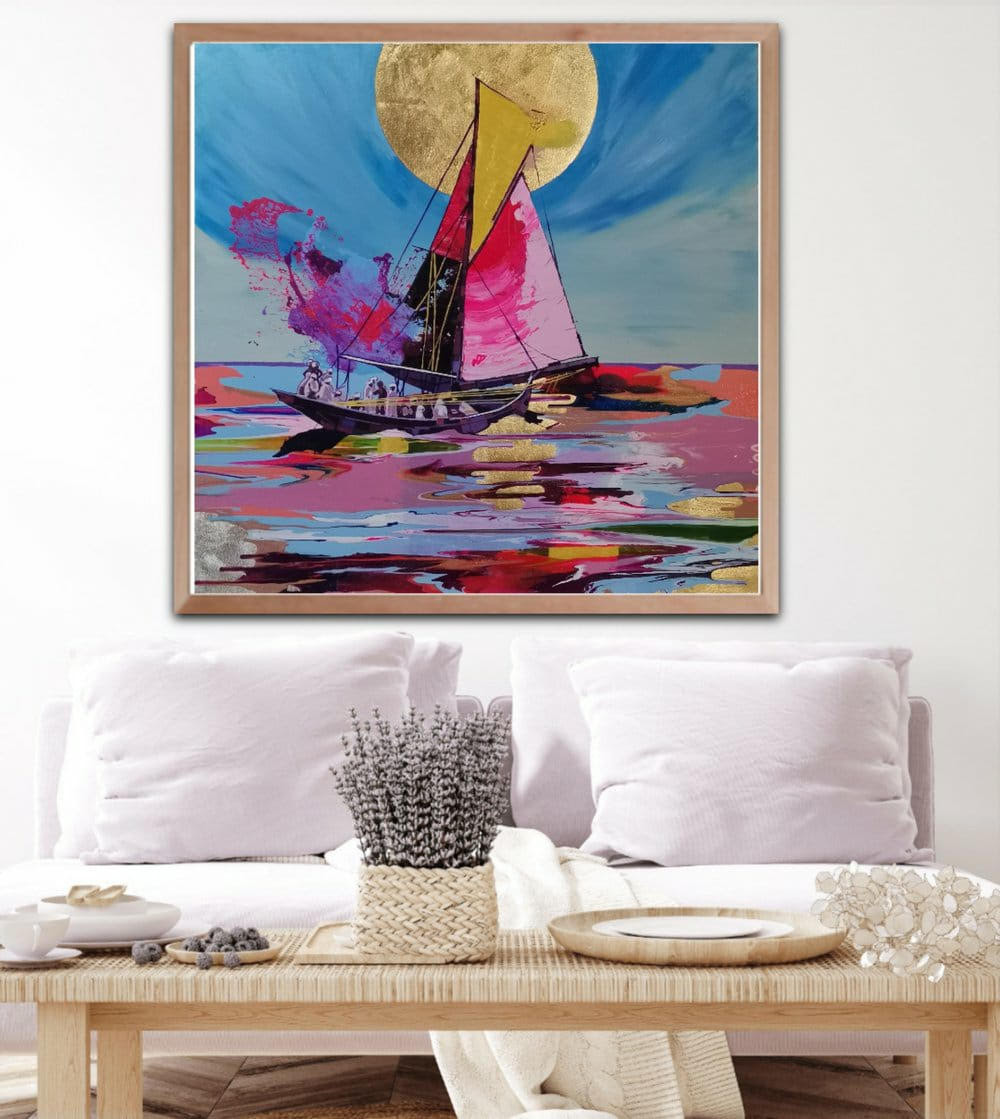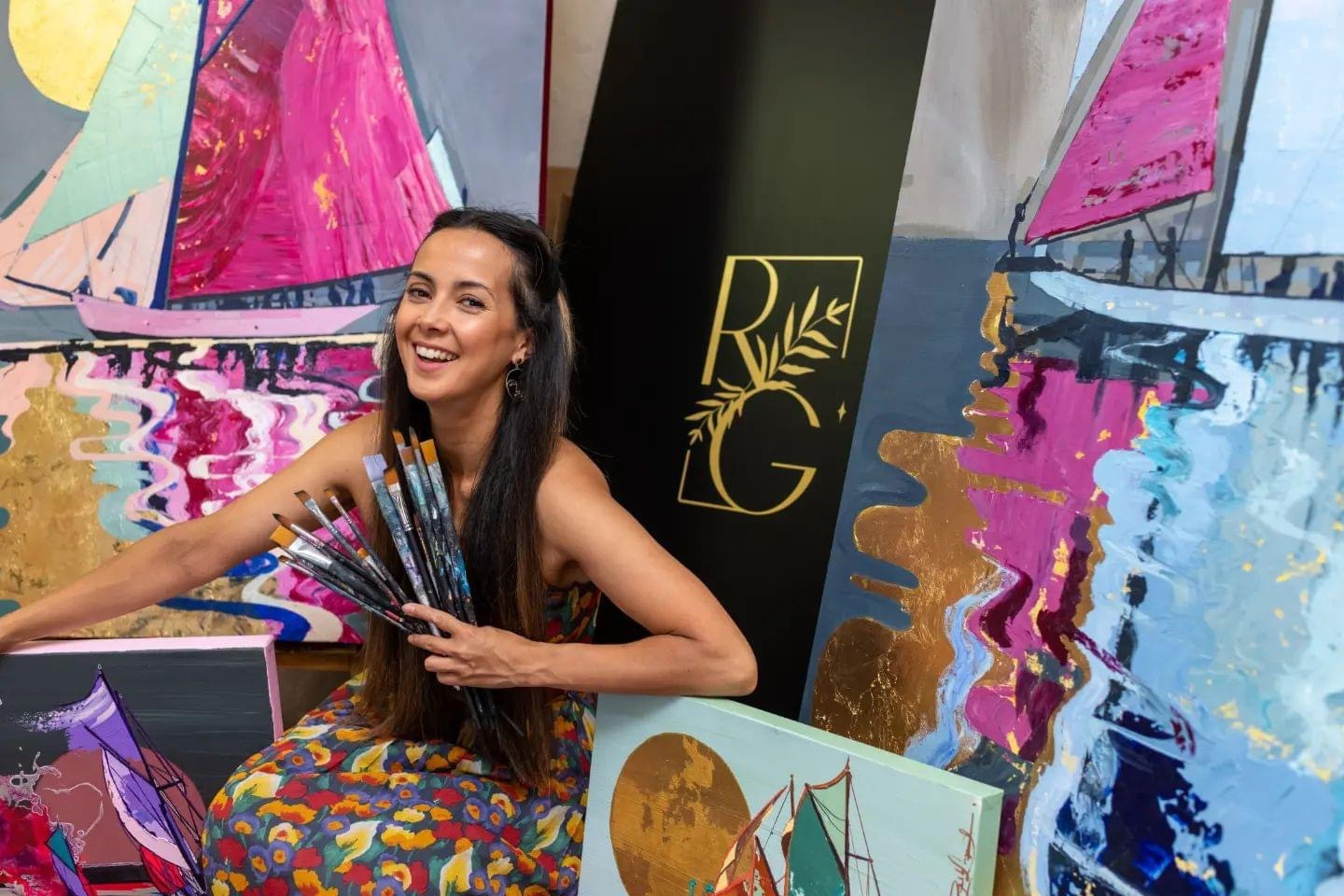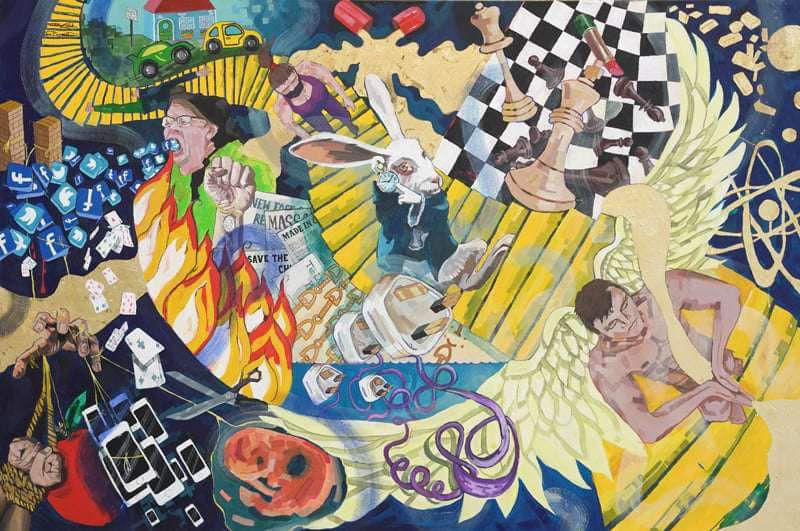You may have spotted Rebacca Grant as Daisha Anderson, the Filipina nurse in the BBC medical drama Holby City, or as Heather Irvine on the BBC soap opera Doctors or on ITV’s Emmerdale as Dr Stamford.
Apart from being an English actress, singer and artist, Grant is a blue blood, being the daughter of Michael Grant, 12th Baron de Longueuil and a third cousin of King Charles III . Her paternal great-grandmother, Ernestine Bowes-Lyon, was first cousin to the British Queen Mother. As a singer, she is known Rebecca Swing.
1705785613-1/GN0A6973-(2)1705785613-1.jpg)
MY. Please tell us something about your family?
RG. We are all very creative, from costume makers, to ballet teachers, to Bond girls, artists and TV stars. Our ballet school and our dance teacher Miss Morrison created a magical childhood for us through storytelling.
MY. Tell us about your life-threatening asthma attack, and what impact did it have on you?
RG. Throughout my childhood, I was in and out of hospital with asthma. But I continued dancing and acting on stage, and also painted a great deal. At 16, I stopped breathing and was in induced coma for two weeks. I almost didn’t recover but waking up and surviving that episode of my life was like rebirth. Dance and paint not only kept my mind alive and my body resilient, it sparked creativity and was a huge growing period in my life. For me this was a near-death experience surviving which made me almost fearless in life and gave me a purpose in life to gift the world with my art.

MY. Since you are self-taught, is it possible for anyone to become a self-taught artist?
RG. Know your craft well, learn different techniques and master the ones that inspire you. Find your own voice and communicate with that. You can be an incredible technician but if you have nothing to communicate or are trying to imitate someone’s art, it’s not really art. Art is the beauty of communication over technique. Your own communication.
MY. You received the National Painting Award at the age of 16, even though you have been acting and singing from an early age. Do you prefer painting?
RG. It’s funny and odd when people ask me what I prefer. Men have been put down in history as many things under their name — poet, philosopher, historian, pilot and navigator etc. Why can’t women hold the same positions and be a master at not just one craft but many. Firstly, I am an artist, but I am also a performer. A performer acts, sings and dances. Charlie Chaplin produced, acted, wrote, composed music and no one bat an eyelid. A woman in this day and age has to embrace everything she is and not be pigeonholed for just a single aspect.

MY. You have created many beautiful and powerful paintings. What brought the themes to your mind?
RG. The themes just come to me. I see the world and I ask myself, in this moment what kind of gift do I want to give the world? How can I make it better in my own unique way, even if it is a small way. And the images come to me. For instance, during the pandemic — it was boats and ships conquering the waves of challenging times.
MY. Do you plan to sell your art?
RG. My artwork provides a living and I am grateful for that indeed, and that my works are being shipped worldwide.
MY. Are you doing some volunteer work for wildlife or some social cause?
RG. My humanitarian work is with one of UK’s top jive bands, The Jive Aces for their Truth About Drugs Campaign. I want a world free from drug abuse.
MY. Your art work shows harmony despite so much struggle, unrest and many issues in society?
RG. My parents were separated, so in a way, I always want to bring people together. I believe that art unites people. It is un political, beautiful, communicated on a higher plain and reflects humanity. That is why I like to depict harmony and balance in my work.
MY. What is the driving force behind your art?
RG. Art is a valid profession and young, aspiring artists can make a good living if art is given structure and organization. and within that framework you can create and sell. Organisation inspires me. Whether I’m angry, sad, frustrated, happy, elevated and at peace, there is always something there to communicate. This is the gamut of emotion in humanity and you cannot erase it. It is there to be lived with all its colours. Art should reflect the artist and they are important and unusual people in society. Without artists, there is no culture, for they are dreamed up by artists.

MY. What are your creative strengths and skills and where do you feel you need for improvement?
RG. My skill is in having totally my own style which I’ve mastered in several ways throughout the years. I portray illustration, cubism, abstract and Impressionism in my work. I am working on finding a way to expand the scope of my tones.
MY. Tell us about your singing and dancing?
RG. As a child, I trained at the Nora Morrison school of dance, within the Royal Academy of Dance syllabus. We were taught musical interpretation, improvisation, storytelling through music as well as acting. It was incredibly intensive with yearly shows, dance festivals and examinations. I trained intensively in ballet, tap, modern, jazz, Flamenco and Philippine cultural dancing from five years to 20 years of age. I went straight into work from this training. At 16, I worked as a dancer at the Royal Albert Hall for Raymond Gubbay’s opera company and then onto Andrew Lloyd Webber’s Bombay Dreams.
MY. Was playing the role of Filipina nurse Daisha Anderson have something to do with your British-Spanish-Filipina origin?
RG. A Filipina nurse on our screens in the UK added a very different flavour to the drama Holby City. I was very grateful to be given this opportunity purely because the UK has one of the largest populations of Filipina nurses. It was an honour to celebrate this. The role also became well-known because it ran for the longest time.
MY. Tell us about your theatre work?
RG. I’ve performed a number of plays and enjoyed exploring many roles. But my favourite has to be JB Priestley’s A Glass Cage, where I played Jean, a feisty, strong-willed and stubborn Native American girl. She had depth, darkness, light and integrity, and was fighting for her family’s honour after being exiled for being ‘different’ and of a different culture during the Victorian times. I loved the words she spoke, the stance she took and the battles she fought. Right after this play I was cast in BBC’s Holby City.
MY. Tell us about your stage play Dinner with Saddam?
RG. It was pretty much the irony of a dictator visiting an Iraqi family. Apparently, Saddam Hussain would drop round for tea. This became an interesting subject matter for Anthony Horowitz, the writer.
MY. Have you any plans to sell your art through an established platform?
RG. I am working with the hotel groups and interior designers which is an absolute pleasure as I am into more corporate world. I want to stay connected to those seeking my work individually to all those interested. Art if for all.
MY. Did being blue-blood help you move forward in your life and work or did it become a disadvantage for you?
RG. To be honest, it is a fun fact, a bit of trivia, and interesting piece of information, but it has neither hindered or helped what I do in my profession at all. I feel people want to know the artist, not who they are related to. In fact, It doesn’t make a difference and I don’t want it to.
My great grandmother was first cousin to the Queen Mother. But I think the key to my successes would be persistence and the ability to dream. As we grow, we sometimes neglect the very thing that life is created upon and that is the ability to day dream. Then comes action and sheer persistence. Nothing more, nothing less. But you need a purpose to drive that. The prime question in life is what is it that I am trying to achieve? END
Murad Yusufzai is a freelance contributor
All facts and information are the sole responsibility of the writer

